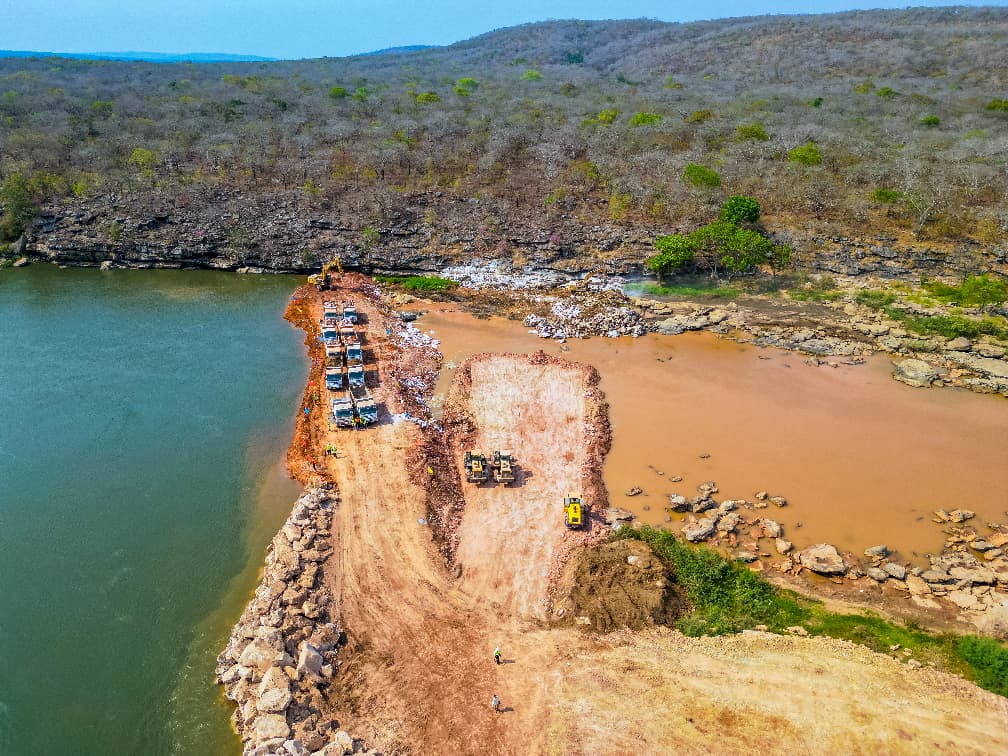
KIGOMA, TANZANIA — With the successful diversion of the Malagarasi River on August 13, 2025, construction is now set to begin on the main dam for the 49.5 MW Malagarasi Hydropower Project. The TZS 300 billion project, which is running ahead of schedule, is a critical investment designed to bring reliable electricity to western Tanzania by 2027. This milestone highlights the government’s strategy to balance massive national projects with regionally focused, climate-resilient power generation.
Project Manager Eng. Saidi Kimbanga described the river diversion—completed more than 10 days ahead of schedule—as a breakthrough moment.
“The project is progressing faster than expected. This milestone shows our potential to complete the project earlier than anticipated, bringing reliable energy to millions sooner,” he noted.
Once completed, the dam will add nearly 50 MW of renewable capacity to Tanzania’s grid, directly benefitting Kigoma and its surrounding regions. According to Kigoma Regional Manager Eng. Julius Sabu, this will be a game-changer for investment: “Kigoma will, for the first time, enjoy reliable power. This opens doors for industries, agribusiness, and investors looking to tap into new opportunities.”
Tanzania’s Hydropower Landscape
Tanzania’s power grid has historically relied on natural gas and a series of legacy hydropower dams. However, the energy landscape has been dramatically reshaped by the recent commissioning of the 2,115 MW Julius Nyerere Hydropower Project (JNHPP). With all nine of its units reported operational by June 2025, the mega-dam has more than doubled the country’s previous installed capacity of ~2.41 GW, creating new opportunities for industrial growth and energy exports.
This new era of energy abundance is supported by a portfolio of key hydropower assets:
- Julius Nyerere HPP (2,115 MW): A game-changing project on the Rufiji River that now anchors the national grid.
- Regional Rusumo Falls (80 MW): A tri-country project that began supplying its shared output to Tanzania, Rwanda, and Burundi in late 2023 and early 2024.
- Legacy Dams: A fleet of older but vital plants, including Kidatu (204 MW), Kihansi (180 MW), Mtera (80 MW), and New Pangani Falls (68 MW), which have formed the backbone of the country’s renewable energy for decades.
The Strategic Role of Mid-Sized Projects
Even as the Julius Nyerere dam redefines national capacity, mid-sized projects like Malagarasi and the upcoming 87.8 MW Kakono project are crucial for Tanzania’s long-term energy security and equity. They serve several key functions:
- Resilience and Diversification: By distributing power generation across different river basins, these projects reduce the national grid’s vulnerability to regional droughts. They are essential for balancing the grid as more variable renewables like solar and wind are added.
- Regional Development: They bring stable, high-quality power directly to underserved regions like Kigoma, unlocking economic potential and catalyzing industrial growth far from the coastal economic hubs.
- Grid Stability: Projects like Malagarasi provide firm, dispatchable power that strengthens local grid infrastructure and improves the quality of electricity for homes and businesses.
This strategy aligns with a continent-wide trend. In 2024, Africa added approximately 4.5 GW of hydropower, with many nations mirroring Tanzania’s approach: building large anchor projects while simultaneously developing smaller, regional dams to boost reliability.
The Path Forward: What to Watch
With the Malagarasi river successfully diverted, the focus now shifts to the next critical phases of Tanzania’s hydropower expansion.
- Malagarasi: Progress on the main dam wall and intake tunnels will be the key metric to watch through 2026.
- Kakono (87.8 MW): The project is advancing toward the implementation phase, with completion works anticipated by 2026 and a final handover by 2028.
- Future Pipeline (Rumakali, 222 MW & Ruhudji, 358 MW): Securing financing and engineering contracts for these large-scale projects will be vital for sustaining Tanzania’s energy growth after the Nyerere dam’s capacity is fully absorbed by new industrial loads, such as the Standard Gauge Railway (SGR).
